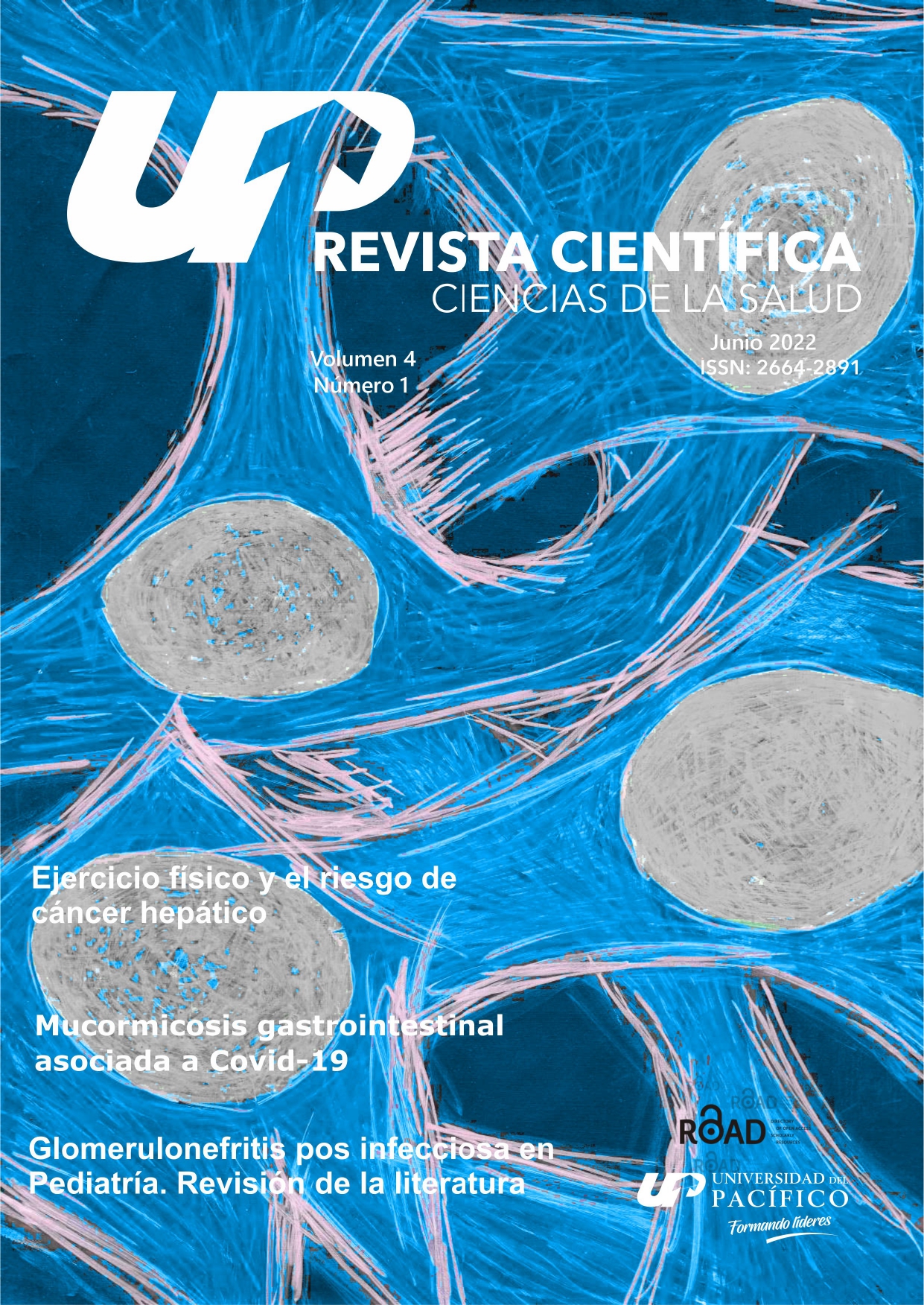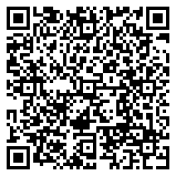Estrategia educativa de Prevención de Enfermedades Bucales en colaboradores de una Universidad Privada dentro del marco del Proyecto de Responsabilidad Social Universitaria
Educational strategy for the Prevention of Oral Diseases in collaborators of a Private University within the framework of the University Social Responsibility Project
DOI:
https://doi.org/10.53732/rccsalud/04.01.2022.114Palabras clave:
índice de higiene oral, índice CPO, higiene bucal, placa dental, caries dentalResumen
Introducción. La caries dental y las enfermedades gingivales son las patologías más comunes en la población mundial y se ha demostrado que las prácticas de higiene oral pueden controlarlas y prevenirlas Objetivo. Diseñar una estrategia educativa de prevención de enfermedades bucales e implementar en forma piloto en el personal de limpieza de la Universidad del Pacífico en Paraguay. Metodología. Estudio de intervención cuasiexperimental en el personal de limpieza de la Universidad del Pacífico en el periodo 2021. Se registraron índices CPOD y de O´Leary para establecer diagnóstico. Cada paciente recibió elementos de higiene bucal y semanalmente recibía mensajes, fotos y videos motivadores vía WhatsApp. Resultados. Participaron 13 individuos de entre 21 y 48 años, 69% del sexo femenino. Se realizaron 6 talleres con insumos para cada participante. El 49% de los participantes logró el objetivo de llegar al 20% del índice de O´Leary y el 40% de ellos reducir el 50% el índice Caries y el 100% de los que completaron los talleres resolvió la gingivitis. De 6 talleres realizados, 3 participantes acudieron al 100% de las actividades Conclusión. El cepillado dental bajo supervisión e instrucciones sencillas disminuye el Índice de O´Leary y controla la gingivitis. El uso de teléfonos celulares para realizar seguimiento y dar motivación constante compartiendo mensajes recordatorios, reflexiones positivas, imágenes de sonrisas agradables y videos demostrativos, evidenció ser altamente efectivo promover la constancia de los cuidados de salud bucal, sin embargo, no hubo impacto sobre la cantidad de caries activas presentes.
Citas
Desai RV, Chandrashekhar Badrapur N, Mittapalli H, Keshavappa Srivastava B et al. “Brush Up”: An Innovative Technological Aid for Parents to Keep a Check of their Children’s Oral Hygiene Behaviour. Rev paul pediatr. 2021; 39:1-7. https://doi.org/10.1590/1984-0462/2021/39/2020085.
Filho CF, Lima KC. Eficacia del uso tópico de fluoruros y del cepillado en el control de caries producidas "in vivo": Revisión sistemática. Av Odontoestomatol. 2008; 24(4):277-288. http://scielo.isciii.es/scielo.php?script=sci_arttext&pid=S0213-12852008000400005&lng=es.
Sanabria Castellanos CM, Suárez-Robles MA, Estrada-Montoya JH. Relación entre determinantes socioeconómicos, cobertura en salud y caries dental en veinte países. Rev. Gerenc. Polít. Salud. 2015; 14(28):161-189. http://dx.doi.org/10.11144/Javeriana.rgyps18-28.rdsc
Pinto T, Freitas G, Dutra D, Kantorski K, et al. Frequency of mechanical removal of plaque as it relates to gingival inflammation: a randomized clinical trial. Journal of Clinical Periodontology. 2013; 40(10):948–954. http://dx.doi.org/10.1111/jcpe.12135
Nassar PO, Bombardelli CG, Walker CS, Neves KV, Tonet K, Nishi RN, Nassar CA. Periodontal evaluation of different toothbrushing techniques in patients with fixed orthodontic appliances. Dental Press J Orthod. 2013; 18(1):76–80. https://doi.org/10.1590/S2176-94512013000100017.
Poyato-Ferrera M, Segura-Egea J, & Bullon-Fernandez P. Comparison of modified Bass technique with normal toothbrushing practices for efficacy in supragingival plaque removal. International Journal of Dental Hygiene. 2003; 1(2):110–114. https://doi.org/10.1034/j.1601-5037.2003.00018.x
Pérez-Bejarano NM, Ferreira-Gaona MI, Alarcón-González VS, Díaz-Reissner CV, Arce-Mena MM, Cueto-González NC, Urquhart-Barreto DA & Ledesma-Amarilla LE. Comparación del tiempo de cepillado de la técnica habitual con la técnica de Bass en estudiantes de Odontología. Mem. Inst. Invest. Cienc. Salud. 2016; 14(3):81-85. https://dx.doi.org/10.18004/mem.iics/1812-9528/2016.014(03)81-085
Chaple Gil Alain Manuel, Gispert Abreu Estela de los Ángeles. “Amar” el índice de O’Leary. Rev Cubana Estomatol. 2019; 56(4):e2154. http://scielo.sld.cu/scielo.php?script=sci_arttext&pid=S0034-75072019000400017&lng=es.
Muller-Bolla M, Courson F. Toothbrushing methods to use in children: a systematic review. Oral Health Prev Dent. 2013; 11(4):341-7. https://dx.doi.org/10.3290/j.ohpd.a30602.
Pacheco-Vergara M.J., Cartes-Velásquez R.A.. mHealth para mejorar la higiene oral de niños. Revisión de literatura. Av Odontoestomatol. 2020; 36(1):27-34. http://scielo.isciii.es/scielo.php?script=sci_arttext&pid=S0213-12852020000100004&lng=es.
Ureña JL. El aprendizaje basado en problemas (ABP); avances dentro del programa de la Facultad de Odontología de la Universidad Intercontinental. 2005; 62(2):58-62. https://www.medigraphic.com/pdfs/adm/od-2005/od052d.pdf
OMS. Salud bucodental. 2022. https://www.who.int/es/news-room/fact-sheets/detail/oral-health
Ganss C, Schlueter N, Preiss S, Klimek J. Tooth brushing habits in uninstructed adults—frequency, technique, duration and force. Clin Oral Investig. 2009; 13(2):203-8. https://doi.org/10.1007/s00784-008-0230-8
Rivas GJ, Salas LMA, Treviño RME. Diagnóstico situacional de las afecciones bucodentales en la población de la ciudad de Zacatecas, México. Rev ADM 2000; 57(6): 218-21. https://www.medigraphic.com/pdfs/adm/od-2000/od006d.pdf
Aguilar-Orozco N, Navarrete-Ayón K, Robles-Romero D, Aguilar-Orozco SH, Rojas-García A. Dientes sanos, cariados, perdidos y obturados en los estudiantes de la Unidad Académica de Odontología de la Universidad Autónoma de Nayarit. Rev Odontol Latinoam 2009; 1(2):27-32.
https://odontologia.uady.mx/revistas/rol/pdf/V01N2p27.pdf
Khalifa N, Allen PF, Abu-bakr NH, Abdel-Rahman ME, Abdelghafar KO. A survey of oral health in a Sudanese population. BMC Oral Health. 2012; 12(5):2-9. https://dx.doi.org/10.1186/1472-6831-12-5.
Hopcraft M, Morgan MV. Dental caries experience in a young adult military Population. Aust Dent J. 2003; 48(2):125-9.
https://dx.doi.org/10.1111/j.1834-7819.2003.tb00021.x.
Hopcraft MS, Yapp KE, Mahoney G, Morgan MV. Dental caries experience in young Australian Army recruits 2008. Aust Dent J. 2009; 54(4):316-22. https://dx.doi.org/10.1111/j.1834-7819.2009.01156.x.
Medina-Solis CE, Maupomé G, Pérez-Núñez R, Avila-Burgos L, Pelcastre-Villafuerte B, Pontigo-Loyola AP. Política de salud bucal en México: Disminuir las principales enfermedades. Una descripción. Rev Biomédica. 2006; 17(4):269-86. https://doi.org/10.32776/revbiomed.v17i4.466
Watt RG, Daly B, Allison P, Macpherson L, Venturelli R, Listl S, et al. Ending the neglect of global oral health: time for radical action. Lancet. 2019; 394(10194):261-72. https://doi.org/10.1016/S0140-6736(19)31133-X
Facal M, Limeres-Posse J, Álvarez-Congost C, Ramos Barbosa I y García Caballero L. Modelos de enseñanza-aprendizaje. Un modelo de aplicación del Aprendizaje Basado en Problemas (ABP) en odontología infantil. Fuentes documentales y recursos docentes en odontopediatría y ortodoncia". 2014, 167-176. https://minerva.usc.es/xmlui/bitstream/handle/10347/12016/Capitulo_5.pdf?sequence=1
Palomer L, Humeres P, Sánchez A, González S, Contreras A. Una experiencia de "aprendizaje-servicio": fomentando el desarrollo de valores en estudiantes de odontología chilenos. FEM (Ed. impresa). 2013; 16(2):91-96. https://dx.doi.org/10.4321/S2014-98322013000200007.
Álvarez Loureiro L, Gugelmeier V, Hermida Bruno L. Cómo aprenden los estudiantes de odontología que cursan el último año de la carrera. Odontoestomatología. 2013; 15(21):4-11. http://www.scielo.edu.uy/scielo.php?script=sci_arttext&pid=S1688-93392013000100002&lng=es.


.png)














 Todo el contenido de esta revista, está bajo
Todo el contenido de esta revista, está bajo 